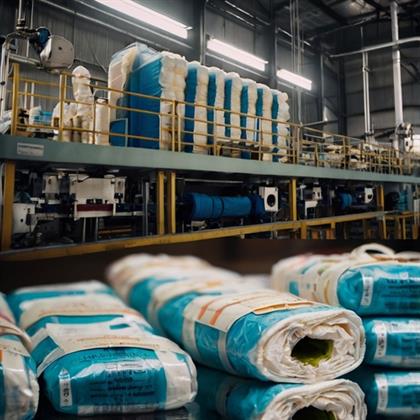
Energy Harvesting System Market 2031 – Technological Advances and Market Dynamics
October 11, 2024
The Energy Harvesting System Market is set to expand significantly by 2031, driven by advancements in technology and the increasing need for sustainable energy solutions. Energy harvesting systems capture and store ambient energy from natural sources like solar radiation, mechanical vibrations, and heat, providing power for a wide range of low-energy devices. As industries move toward greener alternatives and seek to reduce energy waste, energy harvesting systems are gaining prominence across sectors like consumer electronics, industrial automation, and building automation.
Technological Innovations Driving Growth
Recent technological developments have played a crucial role in the expansion of the energy harvesting system market. Innovations in micro-power management circuits have enhanced the efficiency of energy harvesting devices, enabling them to convert more ambient energy into usable electrical power. These advancements are especially important for powering autonomous sensors, wearable devices, and remote monitoring systems, all of which have limited access to conventional power sources.
Moreover, the miniaturization of energy harvesting systems is opening up new possibilities for integration into smaller electronic devices. For example, ultra-low-power wireless sensors used in smart cities, transportation, and healthcare can now be powered by energy harvested from ambient sources, significantly reducing maintenance costs associated with battery replacement.
Applications Across Multiple Industries
The applications of energy harvesting systems are expanding across various industries. In the consumer electronics sector, energy harvesting is being used to power wearable devices, such as smartwatches and fitness trackers. These devices often incorporate technologies that capture energy from body movements or thermal energy from body heat, reducing the need for frequent charging.
In the industrial sector, energy harvesting is playing a pivotal role in powering wireless sensors used for predictive maintenance and remote monitoring. These systems can operate autonomously for years by harvesting energy from vibrations, light, or heat generated by machines and equipment, thereby reducing operational costs and improving efficiency.
Market Dynamics and Competitive Landscape
The competitive landscape of the energy harvesting system market is evolving as new players enter the market and existing companies expand their product offerings. Key industry players include EnOcean GmbH, Texas Instruments, and Cymbet Corporation, which are investing in research and development to improve the efficiency and functionality of energy harvesting solutions. Collaboration between technology companies and energy firms is also on the rise, fostering innovation and bringing new solutions to the market.
Governments across the world are implementing policies and regulations that promote the use of renewable energy, further supporting the adoption of energy harvesting systems. For instance, initiatives aimed at reducing carbon emissions and promoting smart city projects are creating a favorable environment for the growth of this market.
Challenges and Future Outlook
Despite the potential for growth, the energy harvesting system market faces challenges. One of the primary obstacles is the relatively low energy output of these systems, which limits their use to low-power devices. Additionally, the initial costs of implementing energy harvesting solutions can be high, which may deter some industries from adopting these technologies, especially in regions with limited access to capital.
Looking ahead to 2031, continued innovation will be crucial in overcoming these challenges. As the efficiency of energy harvesting systems improves and costs decrease, their adoption is expected to accelerate, especially in emerging economies. The integration of energy harvesting with other renewable energy technologies, such as solar panels and wind turbines, could further enhance its viability as a long-term solution for sustainable power.
Conclusion
The energy harvesting system market is on the verge of transformative growth, driven by technological advancements and increasing demand for energy-efficient solutions. By 2031, these systems will likely become integral to a wide range of applications, from consumer electronics to industrial automation. As the market continues to evolve, energy harvesting systems will play a critical role in the global shift toward renewable energy and sustainability.
Leave a Reply
Related Products
You Might Like Also

Forecasting the Future of the Adult Diaper Market 2031
The Adult Diaper Market is set for transformative growth as we approach 2031. With increasing life expectancy and changing societal norms surrounding incontinence Read More

The Future of Advertising: In-Game Advertising Market 2031
The In-Game Advertising Market is on the verge of a transformative era as it continues to gain traction among advertisers looking to connect with consumers in engaging ways Read More

Carbon Black Market Outlook: Growth Prospects and Challenges by 2031
The Carbon Black Market is expected to grow steadily by 2031, spurred by increasing demand from industries like rubber, plastics, and paints. Carbon black Read More

The Future of the Steam Turbine Market by 2031
The Steam Turbine Market is on the cusp of a transformation, influenced by the global energy landscape's evolving demands and technological advancements Read More

The Aquafeed Market is projected to witness robust growth by 2031 as the global aquaculture industry continues to expand Read More

Green Building Materials Market 2031: Sustainability at the Core of Future Construction
The Green Building Materials Market is set to experience robust growth by 2031 as the construction industry shifts towards more sustainable and environmentally friendly practices Read More











